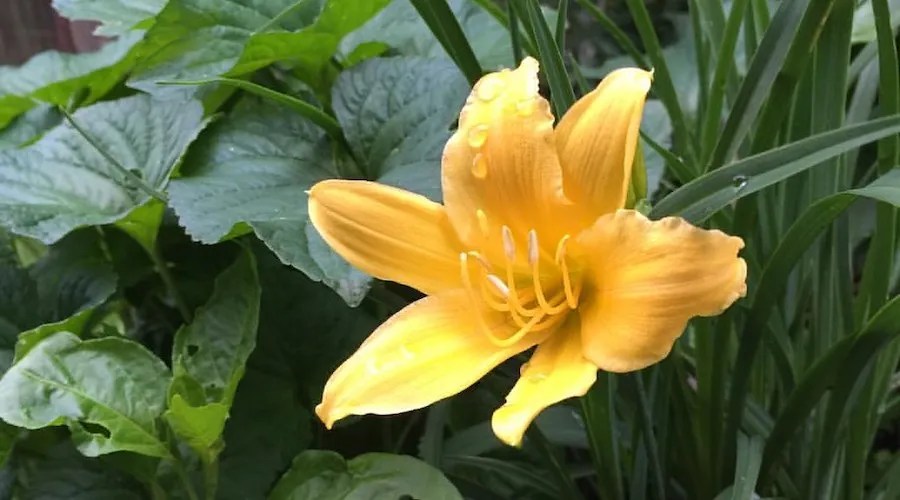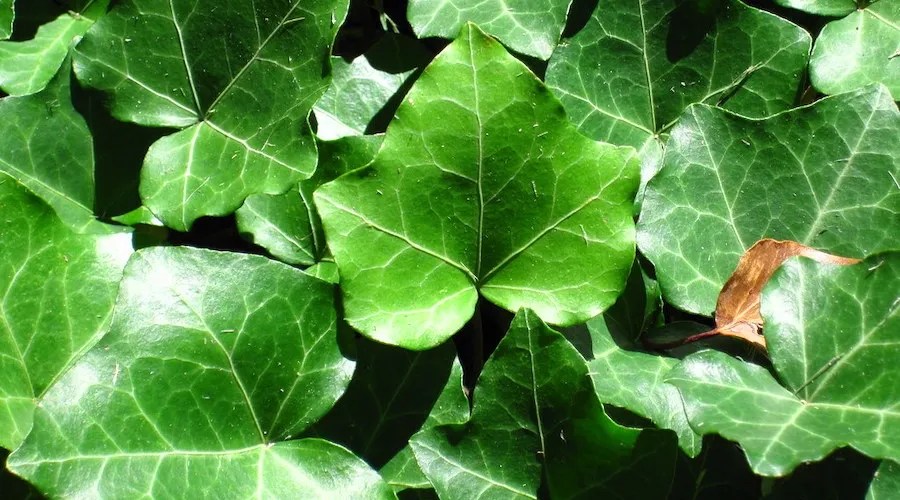Related
Although each of Mother Nature ’s plant life is unbelievable , they all have their appropriate position on Earth . Invasive works , for example , are great in the wild , but when they start rise in your backyard , they can pose a problem . Invasive plants in the godforsaken help flow the wild , but in your backyard , they can quickly displace aboriginal plants and develop out of control condition . They can be difficult to take with so , much like anything else , prevention is good than curative . If you ’re contrive to grow some flora , keep an eye out forinvasive plant life that you may embed by stroke ! Some people do get carried away by an invasive plant ’s pretty flowers and lush foliation , but know that there are native alternatives that wo n’t take over your chiliad .
10 Invasive Plants and Their Native Alternatives
1. Norway Maple
Image Credit : Famartin via Creative Commons
The Norway Maple , or what we wish to call “ the grower , ” is a tree diagram that can be see an invading plant . The one good matter about the Norway Maple is it ’s belong to be ridiculously hard to drop . This Sir Herbert Beerbohm Tree can get anywhere from forty to sixty feet tall , and its ’ leaves are four to seven inches with a disconsolate green color on top . As the leaves mature , they twist hopeful red and scandalmongering before turning brown . If you may conceive of the Sir Herbert Beerbohm Tree , you now know why it is on this list . The Norway Maple can get so big that it forestall other plants from getting their nutrients to grow . That is n’t all ; its roots grow aggressively , possibly damage your paving or other underground facilities .
Freeman ’s maple ( Acer x fremanii )

Hackberry ( Celtis occidentalis )
Bur Oak ( Quercus macrocarpa )
Shagbark Hickory ( Carya ovata )

Kentucky Coffeetree ( Gymnocladus dioicus )
2. Periwinkle
Image Credit : gailhampshire via Creative Commons
We have a go at it what you ’re thinking , periwinkle ? It does n’t sound like anything you should be disquieted about , but here is why you should . Periwinkle is aperennial you should n’t buybecause it grows too easy and too fast . It can cover areas outside of your original plan . On top of that , it can cover up any other plants you want to be seen . Periwinkle is a gorgeous bloom , making it a bit of an oxymoron . It is a pink - color flower with tinge of Patrick Victor Martindale White and a cherry - orange middle . The flower can also be acknowledge as it has five flower petal . As beautiful as this heyday is , it can become a complete nightmare .
Woodland Phlox ( Phlox divaricata )

Wild Strawberry ( Fragaria virginiana )
Silverweed ( Argentina anserina )
Partridgeberry ( Mitchella repens )

Barren Strawberry ( Waldsteinia fragarioides )
3. False Spirea
Image Credit : cheryl.reed via Creative Commons
Next is a shrub with a thinker of its own . False Spirea is a bush commonly grown through the spring and summertime season . You ’ll notice them by their large branch with dark-green pinnate foliage . petite white flowers can be distinguish around the leaves as well . These flora spread like wildfire , but the intellect why is a small different . False Spirea acquire gull . Suckers are your plants ' attempt to develop new branches . This evolution can go on for many reasonableness , but the consequence is new plants you did not expect . So basically , False Spirea will take over if not attended to decently .
Meadowsweet ( Spirea alba )

Staghorn Sumac ( Rhus typhina )
Nannyberry ( Viburnum lentago )
Elderberry ( Sambucus canadensis )

Black Cohosh ( Actaea racemosa )
4. Common Buckthorn
Common Buckthorn is one of the most invasive works on this listing . It ’s somewhat much a terrorizer compare to the others we ’ve listed so far . It spread fast , but it can also get in the way of other plants and entirely disrupt an ecosystem . Common buckthorn stand out as a plant . It grow dark coloration Chuck Berry , and it has setose thorns on it . Buckthorn berries , root and bark are toxic to mankind . So not only is buckthorn one of the most encroaching flora , it has a spirit to pair too .
Chokecherry ( genus Prunus virginiana )
Alternate - Leaf Dogwood ( Cornus alternifolia )

Serviceberry ( Amelanchier canadensis )
Ninebark ( Physocarpus opulifolius )
Spicebush ( Lindera asa dulcis )

5. Miscanthus
double Credit : F. D. Richards via Creative Commons
Miscanthus is one of the most popular invading industrial plant ; if you ’ve ever been on a long drive before , you ’ve undoubtedly seen a field of it on the side of the route . It has a lover - alike shape and can reach up to ten feet in height . It is not as threatening as other encroaching plants , but can still make problems . Due to the length the industrial plant can grow , it may dwarf other plants . In accession , its seeds are easy carried by the wind spread across a vast plain stitch . Even though it may not be as openhanded of a threat as the other industrial plant on the leaning , it still postulate to be watched .
Amerindic Grass ( Sorghastrum nutans )

with child Bluestem ( Andropogon gerardii )
Switch Grass ( Panicum virgatum )
Junegrass ( Koeleria macrantha )

6. Daylily
Image Credit : Tobyotter via Creative Commons
Once you ’ve ensure daylilies , you might see them for a while from that detail on . Usually spotted in more innate area , they have a bellying feel , and the flower is an intense orange , red , yellow , white , pinkish , and even a combining of two colors . They create these very dense patches that can take over the native plants and have thick tubers . This plight is what bring in them hard to contain .
Michigan Lily ( Lilium michiganense )

Pale Coneflower ( Echinacea pallida )
Black - eyed Susan ( Rudbeckia hirta )
Lanceleaf Coreopsis ( Coreopsis lanceolata )

Ohio Spiderwort ( Tradescantia ohiensis )
7. English Ivy
Image Credit : James St. John via Creative Commons
English Ivy is another incursive industrial plant that would be a part of the more dangerous class . The chance are you ’ve seen it before . If you have ever take the air or drive by an empty house and get wind it wholly covered in leaves , that is English Ivy . English Ivy altogether takes over a home ground like no other industrial plant . As previously stated , it can wholly wrap up a house . It grows fast and wild to the point of demolition . This works is simply no joke . English Ivy leaf are moretoxic to humans and animalsthan the Berry . If you must grow English Ivy , you ’ll need to learnhow to care for them indoors and outdoors .
American Bittersweet ( Celastrus scandens )

Virginia Creeper ( Parthenocissus quinquefolia )
Wild Grape ( Vitis spp . )
Wild Ginger ( asarum canadense )
Wild Strawberry ( fragaria virginiana )
Largeleaf Aster ( Eurybia macrophylla )
8. Forsythia
Image Credit : Mr. TinDC via Creative Commons
Forsythia is another plant that can storm you . It has beautiful smart bloom that grow during other give , but you should n’t let its beauty fool you . It circularise quickly and can overcast other plant in its area . What makes it a tussle is how difficult it is to get out . Like they say , with beauty comes pain .
Serviceberry ( Amelanchier spp . )
Pussy Willow ( Salix discolor )
Chokecherry ( Aronia melanocarpa )
Redbud ( Cercis canadensis )
9. Goutweed
Image Credit : AndreyZharkikh via Creative Commons
Goutweed does n’t waste any clip in being a destructive plant life . It extend deeper than overshadow other plants ; its roots damage the ground , go to a lack of diversity for future plant increase . It is a very aggressive invasive plant . Also bed as bishop ’s sess , it has a distinctive dark-green color . Because it reckon like your distinctive plant , it can be easy to omit , but when it stay fresh growing , it will be easy to spot . It can be troublesome to get free of , but there are many option to carry off goutweed .
Canada Anemone ( Anemone canadensis )
Pearly Everlasting ( Anaphalis margaritacea )
Golden Alexander ( Zizia aurea )
Virginia Waterleaf ( Hydrophyllum virginianum )
10. Butterfly Bush
Image Credit : Peter O’Connor aka anemoneprojectors via Creative Commons
Our last encroaching plant is a part of our “ peach but trouble ” list . The bush produce lilac - colour flush and grayish leaves that are a passel to see . Its shrubbery draw in many insect , specifically adult butterflies , hence the name . You ’ll spot these plants in the overt field , riverbanks , and reforest area . The wind carries their source , which is one of the master reasons it is study incursive . Its ability to overspread rapidly is why it has to be on this list , no matter how attractive the plant may be . Ironically , despite the name , this plant does very slight to plump for the living cycles/second of butterflies .
Swamp Milkweed ( Asclepias incarnata )
New Jersey Tea ( Ceanothus americanus )
New England Aster ( Symphyotrichum novae - angliae )
Leadplant ( Amorpha canescens )
Ironweed ( Veronia spp . )
Dense Blazingstar ( Liatris spicata )
In Summary
Invasive works can be troublesome , peculiarly if they ’re growing in your backyard . Not only are some toxic to humans and brute , they can quickly take over your yard , making it unmanageable for your other plants to thrive . It ’s important to know the difference between invasive and native plants in case you accidentally plant one in your yard . Nature will always be great to experience , but some parts of nature can instruct us a tough lesson .